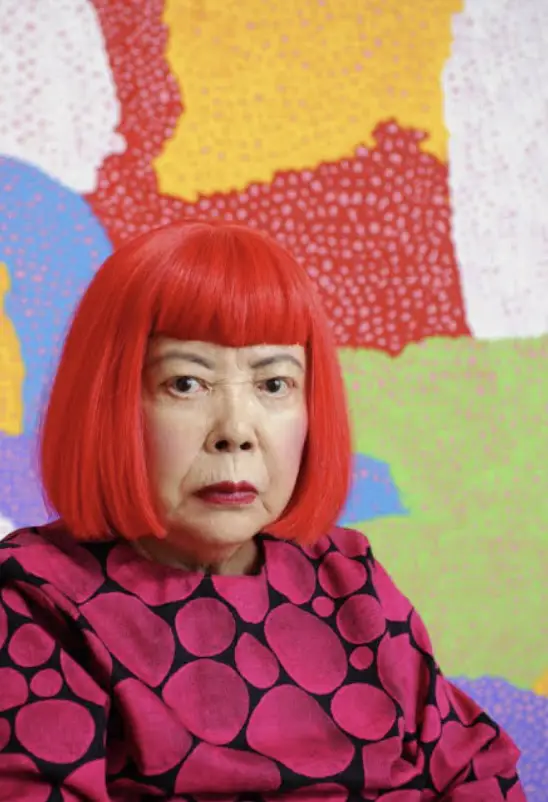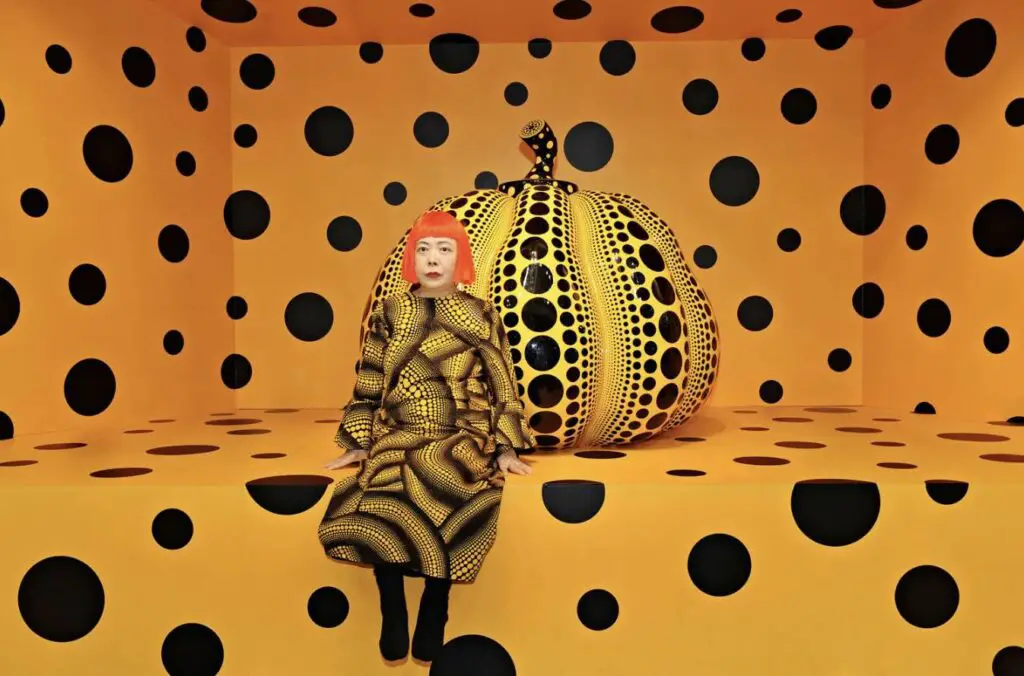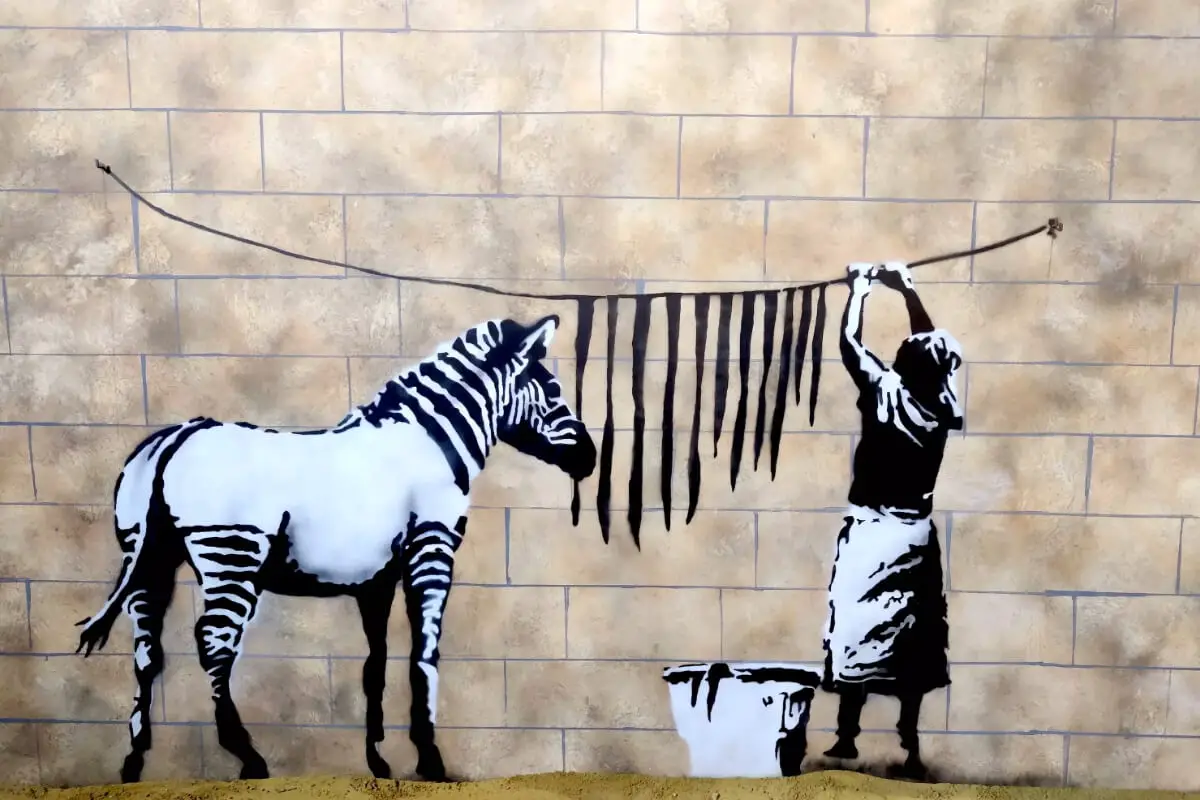The landscape of contemporary art is as diverse as it is dynamic, marked by a relentless push towards the novel and the revolutionary. At the forefront of this creative odyssey stand artists like Jeff Koons, Yayoi Kusama, Ai Weiwei, and Damien Hirst, whose audacious experiments and conceptual forays have redefined the boundaries of artistic expression. As we peel back the layers of their groundbreaking works, we encounter a rich tapestry of mediums and methods, from digital wizardry to aesthetic activism.
These artists have captured our imaginations and provoked us to contemplate the very fabric of society and our place within it. In this exploration, we will navigate the labyrinth of contemporary art, uncovering the threads that connect artistic innovation to the pulsating heart of current socio-political discourse.
Table of Contents
- Pioneers of Contemporary Art
- Mediums and Methods in Contemporary Art
- Contemporary Art and Social Commentary
- Art Movements within Contemporary Art
- Related Questions
Pioneers of Contemporary Art
Visionaries of the Canvas: Contemporary Artists Redefining Our Era
In the vibrant tapestry of modern art, select visionary artists distinguish themselves, capturing the public imagination and challenging the very boundaries of artistic expression. Through innovative techniques and thought-provoking messages, these trailblazers are not merely creating art; they are molding the present-day art world.

Yayoi Kusama, known for her spellbinding polka dots and infinity rooms, has created a phenomenon that transcends typical art appreciation. With a career spanning several decades, Kusama’s work resonates with themes of infinity and self-reflection, inviting viewers into her mesmerizing, mirror-filled installations. These immersive environments suggest a universe of endless repetition, engaging the audience in a personal journey through the cosmic scale of existence.

Banksy, an enigmatic figure shrouded in mystery, uses the urban landscape as his canvas, challenging social norms and sparking dialogue with his provocative stencil art. His anonymity serves as a statement in itself, underlining the power of ideas over the cult of personality. Banksy’s satirical street art, often infused with dark humor, critiques politics, society, and humanity, compelling onlookers to question their surroundings and the status quo.

Ai Weiwei, a fearless critic of political structures and a champion for human rights, communicates his activism through potent artworks span sculpture, installations, film, and photography. Ai’s dedication to social commentary is embodied in works like the “Sunflower Seeds” installation at Tate Modern, which consisted of millions of hand-painted porcelain seeds, each one representing the individual amidst the masses and the resilience of the human spirit in the face of mass conformity and oppressive regimes.

Julie Mehretu’s grand, abstract paintings are a kinetic whirlwind of color, form, and line, mapping out more than just physical spaces— they also chart social and cultural topographies. Her large-scale works are densely layered, reflecting identity, history, and place complexities. Mehretu’s canvases visually embody global interconnectivity, where past and present coalesce in a dynamic, ever-evolving narrative.
The influence of these artists extends beyond galleries and museums, infiltrating popular culture and the collective consciousness. Each one, with its unique voice and medium, reminds us that art is not a passive entity but a living, breathing force that can transform societies, provoke thought, and introspectively connect us with the existential threads of our being.
The legacies being sculpted by such artists will inform not only current generations but also those to come, offering insight into our time’s cultural and aesthetic values. These contemporary artists are not just shaping today’s art world; they are redefining how we view, interact with, and understand art.

Mediums and Methods in Contemporary Art
The Symbiosis of Technology and Tradition: Charting the New Frontiers of Art
As the brush once revolutionized the canvas, today’s technological advancements have ushered in a new epoch for creators and appreciators of art. Gone are the days when oil on canvas or chisel to stone represented the zenith of artistic expression. The digital age has catalyzed a seismic shift in the creative process, merging the traditional with the avant-garde and expanding the realm of what is considered art.
The advent of digital art, a term that spans from intricately coded masterpieces to augmented reality experiences, has democratized the art-making process. Unknown artists, with access to software and an internet connection, can now catapult to recognition, showcasing their works on a global digital gallery. The pixel, not unlike the pointillists’ dot, has emerged as the new stroke of genius in the hands of the modern digital painter.
In its relentless evolution, art has transcended physical mediums; with virtual reality, we step inside the worlds artists conceive, blurring the lines between reality and imagination. Art is no longer a static encounter within these immersive spaces but a dynamic interaction. It invites dialogue, movement, and a multi-sensory involvement that traditional mediums could only aspire to achieve.
Even in sculpture, 3D printing technology has revolutionized how we create and engage with three-dimensional forms. This radical tool allows artists to fabricate complex designs that defy traditional crafting techniques, bypassing limitations of material and scale. As a result, the sculpture has broken free from the confines of weight and mass, soaring into realms of intricacy and fluidity once thought impossible.
Photography has been reborn in the digital age. It’s not merely about capturing a moment anymore but about the capacity to manipulate, enhance, and even build moments that merge the real with the surreal. The boundaries between photography and painting overlap and converge to create a hybrid art form that challenges our perception of reality.
Perhaps most strikingly, the open-source movement has kindled a collective spirit in art creation. Crowdsourced projects breathe with the input of a global community, echoing a hive-mind aesthetic that is both beautifully diverse and harmoniously unified. The artwork thus becomes a living testament to human collaboration, transcending geographical and cultural barriers.
In conclusion, the artistic horizons have expanded in ways unfathomable to our forebearers. As mediums evolve and new methods take root, art relentlessly redefines itself. What remains constant in this sea of change is the human impulse to create and its transformative effect on the individual and society. By embracing innovation, we ensure that the story of art is never stagnant but a tale continually unfolding with each audacious brushstroke of technology.

Contemporary Art and Social Commentary
Contemporary artists are critical in shaping how we perceive and interact with the world around us. They are not only creators but also commentators, innovators, and often catalysts for change. Today’s art is deeply intertwined with social and political narratives, giving voice to issues and perspectives that might be overlooked or unheard of.
In public art, artists seize the opportunity to engage with communities on a grand scale. Murals and installations create open dialogues with the audience, confronting passersby with visual narratives that provoke thought and conversation. These visuals, embedded within the public domain, become part of the community’s daily life, transforming ordinary spaces into forums for public thought and communal expression.
Art also serves as a visual record of socio-political climates, with many artists responding to contemporary events through their works. Such art captures the essence of a specific moment and serves as a historical document that enables future generations to understand the complexities of our times. The social relevance of such pieces secures them a spot in the tapestry of history, reminding us that our current experiences will become the foundations for tomorrow’s art historical discourse.
Furthermore, artists are expanding the role of spectatorship by involving viewers directly in their work. Interactive art is not a new concept, but today’s technological advancements have widened the scope for audience participation. Interactive installations often demand viewers’ physical involvement, blurring the lines between artist, artwork, and audience. This level of engagement encourages a more profound connection with the piece, prompting a profoundly personal encounter that will likely leave a lasting impression.
Addressing the topic of inclusivity, artists are dismantling barriers by utilizing digital platforms to reach wider audiences. Social media, for instance, has revolutionized how art is consumed and shared, allowing for a more inclusive art world where anyone with internet access can participate. This democratization extends the reach of artists who traditionally may not have had the means or opportunity to present their work in galleries or museums.
Beyond two-dimensional works, technology has breathed life into the field of sculpture through advances in 3D printing. The tactile nature of sculptural works gains new dimensions with this technology, pushing the boundaries of what can be physically constructed. As artists explore these new frontiers, they challenge our form, space, and materiality concepts.
Lastly, the intersection between art and technology has resulted in new genres and forms that continue to evolve. Digital art, crypto art, and even Non-Fungible Tokens (NFTs) are shaping the art market and the avenues through which artists can express themselves. As this digital landscape unfurls, so does the potential for creative expression, innovation, and the re-imagination of what art can be.
In conclusion, contemporary artists are at the forefront of a shifting paradigm where the power of art extends beyond the canvas. Through their works, they navigate the interplay of aesthetics, social engagement, interactive experiences, and technological frontiers, securing their role as pivotal influencers in cultural and political spheres.

Art Movements within Contemporary Art
Stepping into the arena of contemporary art movements, we observe compelling creatives carving niches with novel approaches, each adding a distinct texture to the tapestry of modern culture. The rich contours of contemporary art shape aesthetic sensibilities and become an indelible part of the social fabric, weaving through the narratives of our times.
Street Art’s Evolution cuts through urban landscapes globally, transcending its graffiti origins to engage a broader audience on a grand scale. Artists like Shepard Fairey stir the pot with iconic imagery wedded to political undercurrents. This movement elevates the milieu by embedding powerful messages in everyday scenes, turning cities into open-air galleries accessible to all.
Performance Art, too, lays claim to profound spatial transformations. Through the corporeal medium, artists embody societal themes, often amid public spaces, creating transient yet impactful impressions upon those who witness their ephemeral exhibitions. These live acts challenge the permanence of traditional art forms, highlighting the immediate and perishing nature of existence.
Sustainability in Art emerges as an ecological clarion call, with environmental degradation stirring artists to reflect upon and interrogate our relationship with nature. Utilizing recycled materials, they craft pieces that speak to the urgent need for conservation and sustainability, transforming reclaimed resources into insightful art.
Minimalism and Post-Minimalism persist, maintaining their presence in the contemporary scene by stripping back to the essentials. These works ask viewers to find meaning in the purity of form, space, and material, allowing for contemplation and introspection.
Bio Art, a frontier-blending art and biology, presents another intriguing dimension. Artists collaborate with scientists, employing living tissues, bacteria, and genetic information to construct works that raise philosophical and ethical questions concerning life and human intervention.
In the intersection of Illustration and Art, an illustrative technique erstwhile confined to books and periodicals now burgeons onto gallery walls. This fusion of narrative and visual art delights with its vivid storytelling, endearing characters, and bold graphic styles, stretching imagination’s limits.
Lastly, the Art Toy Movement revels in collectible designer toys, often with roots in street culture and pop art. These designer toys become coveted art pieces far beyond child’s play, amassing fans and collectors drawn to their playful ingenuity.
Together, these movements represent a kaleidoscope of creative vigor and intellectual provocation amid the swiftly changing landscape of 21st-century life. They stand as a testament to art’s relentless pursuit of new means of expression, societal engagement, and cultural commentary, ensuring the vibrancy of art’s future remains bright and unpredictable.

Our journey through contemporary art’s vibrant and transformative world reveals a multiverse of ideas, forms, and actions that continue to challenge and reshape our perceptions. The medium is indeed the message, as the pioneering visions of artists become interwoven with the societal tapestry, sparking a dialogue that transcends cultural and ideological boundaries.
As we step beyond the gallery walls, the echoes of these artistic ventures continue to reverberate, heralding an age where art is not merely a mirror to society but a hammer with which to shape it. The artists and movements we have encountered serve as beacons that guide us through the complexity of the present and offer glimpses into the potentialities of our shared future.
Anita Louise Art is dedicated to art education, great artists, and inspiring others to find and create their art. We love art that uplifts and inspires. #ArtToMakeYouSmile! #ArtToMakeYouHappy!
If you are interested to see any of my art, you can find out more by clicking here. If you are interested in what inspires me and my paintings, you can discover more by clicking here.
We have a free newsletter and would love you to be part of our community; you can subscribe to the newsletter by clicking here. If you have any questions, I would be happy to talk to you at any time. You can reach me, Anita, by clicking here.
Subscribe to our Anita Louise Art YouTube Channel filled with great videos and information by clicking here.
Join us for our podcast “5 Minutes With Art.” Spend just 5 minutes a week with us to discover and learn about great art and artists. You can find out more about our podcast by clicking here.
Related Questions
Why Was Impressionism Art At First Rejected?
During the emergence of impressionism art, fine art oil painting was an essential addition to interior design, especially for the affluent and the increasing arrival of the middle classes. For these art patrons, only some particular art styles were considered acceptable for them to use for the interior design of their home, and impressionism art did not fit into any of these culturally acceptable fine art categories.
By clicking here, you can learn more by reading Why Was Impressionism Art at First Rejected?
Similarities of Expressionism And Impressionism Art And Their Differences
Impressionism and Expressionism art movements started in Europe, but the impressionism movement started before the Expression art movement. Each movement has different looks of art which are distinguishable from each other. Even though they are both different art movements, there are still some similarities between them.
By clicking here, you can learn more by reading Similarities of Expressionism and Impressionism Art And Their Differences.
What Does Japonisme Mean?
The term Japonisme is about the influence of Japanese art on European culture and arts. Most notably, the influence Japanese woodblock prints had on the Impression art movement. Many of the prominent artists from the Impressionism art movement were inspired by the Japanese Ukiyo-e woodblock print artists.
By clicking here, you can learn more by reading What Does Japonisme Mean?

